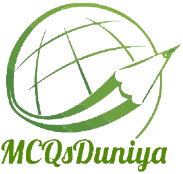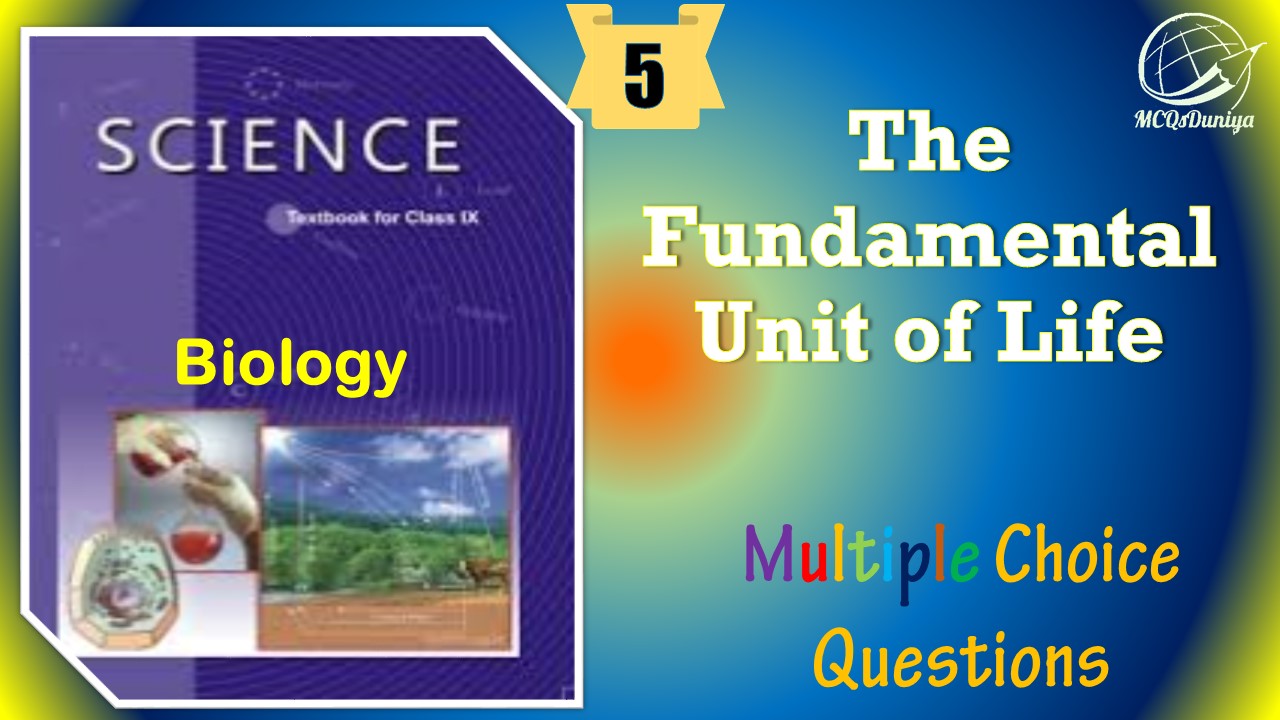Class 9 Science MCQ The Fundamental Unit of Life with Answers is Prepared Based on Latest Exam Pattern. Students can solve NCERT Class 9 Science MCQ The Fundamental Unit of Life with Answers to know their preparation level.
Students who are searching for NCERT Class 9 Science MCQ The Fundamental Unit of Life with Answers are compiled here to get good practice on all fundamentals. Know your preparation level on MCQ Questions for Class 9 Science MCQ The Fundamental Unit of Life with Answers. You can also verify your answers from the provided Class 9 Science MCQ The Fundamental Unit of Life with Answers. So, ace up your preparation with MCQ of Class 9 Science MCQ & NCERT Textbook solutions Examinations.
NCERT Class 9 Science MCQ The Fundamental Unit of Life with Answers
Question : Who discovered the cell?
(a) Robert Hooke
(b) Leeuwenhoek
(c) Robert Brown
(d) T. Schwann
Answer :(a) Robert HookeShow Answer :
Question : The proteins and lipids, essential for building the cell membrane, are manufactured by
(a) rough endoplasmic reticulum
(b) Golgi apparatus
(c) plasma membrane
(d) mitochondria
Answer :(a) rough endoplasmic reticuluShow Answer :
Question : Chromosomes are made up of
(a) DNA
(b) Protein
(c) DNA and protein
(d) RNA
Answer :(c) DNA and proteinShow Answer :
Question : Which of the following statement marks as a difference between plant cell and animal cell?
(a) Plant cells have cell wall which animal cells do not.
(b) Plant cells do not have vacuole while animal cells do have.
(c) Plant cells have only cell membrane while animal cells have both cell wall as well as cell membrane.
(d) Plant cells have more plastids while animal cells have few plastids.
Answer :(c) ThomsonShow Answer :
Question : In The Last Year Board Examination, Rahul Were Asked A Question Where He Had To Choose The Statement Which Was/Were Correct? Will You Be Able To Answer This Question?
(a) The chromatin material is a thin, thread like intertwined mass of chromosome material and composed of the genetic substance DNA and proteins.
(b) DNA store all the information necessary for the cell to functions to grow and to reproduce further cells of the next generation.
(c) Chromosomes are thread like structures usually present in the nucleus that become visible only during cell division.
(d) All the above.
Answer :(d) All the above.Show Answer :
Question : The cell wall of a plant cell is made up of:
(a) glucose
(b) fructose
(c) protein
(d) cellulose
Answer :(d) celluloseShow Answer :
Question : Engulfing of food materials or foreign bodies by cells like Amoeba is called
(a) diffusion
(b) endocytosis
(c) osmosis
(d) plasmolysis
Answer :(b) endocytosisShow Answer :
Question : Which of these is not related to endoplasmic reticulum?
(a) It behaves as a transport channel for proteins between nucleus and cytoplasm.
(b) It transports materials between various regions in the cytoplasm.
(c) It can be the site of energy generation.
(d) It can be the site for some biochemical activities of the cell.
Answer :(c) It can be the site of energy generation.Show Answer :
Question : You must have observed that a fruit when unripe is green but it becomes beautifully coloured when ripe. According to you what is the reason behind this colour change.
(a) Chloroplasts change to chromosplasts
(b) Chromosplasts change to chromosomes
(c) Chloroplasts change to chromosomes
(d) Chromosplasts change to chloroplasts
Answer :(a) Chloroplasts change to chromosplastsShow Answer :
Question : Which Out Of The Following Is Not A Function Of Vacuole?
(a) Storage
(b) Providing turgidity and rigidity to the cell
(c) Waste excretion
(d) Locomotion
Answer :(b) Providing turgidity and rigidity to the cellShow Answer :
Question : Which of the following is known as the ‘Power House’ of a cell?
(a) Nucleus
(b) Golgi Bodies
(c) Ribosome
(d) Mitochondria
Answer :(d) MitochondriaShow Answer :
Question : Middle lamella occurs:
(a) Inner to primary wall
(b) Inner to secondary wall
(c) Outer to secondary wall
(d) Outer to primary wall
Answer :(d) Outer to primary wallShow Answer :
Question : Plasmolysis in a plant cell is defined as
(a) breakdown (lysis) of plasma membrane in hypotonie medium
(b) shrinkageof cytoplasm in hypertonic medium
(c) shrinkage of nucleoplasm
(d) none of them
Answer :(b) shrinkageof cytoplasm in hypertonic mediumShow Answer :
Question : The process of plasmolysis in plant cell is defined as:
(a) Breakdown of plasma membrane in hypotonic solution.
(b) Shrinkage of cytoplasm in hypertonic medium.
(c) Shrinkage of Nucleoplasm.
(d) None of these.
Answer :(b) Shrinkage of cytoplasm in hypertonic medium.Show Answer :
Question : The Cell Organelle Involved In Forming Complex Sugars From Simple Sugars Are
(a) Endoplasmic reticulum
(b) Ribosomes
(c) Plastids
(d) Golgi apparatus
Answer :(d) Golgi apparatusShow Answer :
Question : Which is the longest cell of the human body?
(a) Nerve cell
(b) Liver cell
(c) Kidney cell
(d) Cardiac cell
Answer :(a) Nerve cellShow Answer :
Question : Cell wall is absent in
(a) Plants
(b) Bacteria
(c) Fungi
(d) Mycoplasma
Answer :(d) MycoplasmaShow Answer :
Question : Which of the following are covered by a single membrane?
(a) Mitochondria
(b) Vacuole
(c) Lysosome
(d) Plastid
Answer :(b) VacuoleShow Answer :
Question : Among the following statements which one is incorrect?
(a) Golgi apparatus is involved with formation of lysosomes.
(b) Nucleus, mitochondria and plastid have DNA, hence they are able to make their own structural proteins.
(c) Lysosomes are called the suicide bags as they eat up their own cells.
(d) Cytoplasm is called known as protoplasm.
Answer :(d) Cytoplasm is called known as protoplasm.Show Answer :
Question : Plasmolysis In A Plant Cell Is Defined As:
(a) Break down (lysis) of plasma membrane in hypotonic medium
(b) Shrinkage of cytoplasm in hypertonic medium
(c) Shrinkage of nucleoplasm
(d) None of them
Answer :(b) Shrinkage of cytoplasm in hypertonic mediumShow Answer :
Question : Who proposed the “Black Reaction”?
(a) Benda
(b) Camillo Golgi
(c) Schleiden
(d) None of them
Answer :(b) Camillo GolgiShow Answer :
Question : Nuclei were first discovered by
(a) Strasburger
(b) Fonatana
(c) Robert Brown
(d) Robert Koch
Answer :(c) Robert BrownShow Answer :
Question : Which cell organelle plays a crucial role in detoxifring many poisons and drugs in a cell?
(a) Golgi apparatus
(b) Lysosomes
(c) Smooth endoplasmic reticulum
(d) Vacuoles
Answer :(c) Smooth endoplasmic reticulumShow Answer :
Question : The proteins and lipids, essential for building the cell membrane, are manufactured by:
(a) Endoplasmic reticulum
(b) Golgi apparatus
(c) Mitochondria
(d) Peroxisomes
Answer :(a) Endoplasmic reticulumShow Answer :
Question : Which of the following are formed in bone marrow?
(a) RBC
(b) Cartilage cell
(c) Blood platelets
(d) Fibres
Answer :(a) RBCShow Answer :
Question : Golgi apparatus takes part in synthesis of:
(a) Glycolipids
(b) Glycoproteins
(c) Hormones
(d) All the above
Answer :(d) All the aboveShow Answer :
Question : The undefined nuclear region of prokaryotes is also known as
(a) nucleus
(b) nucleolus
(c) nucleic acid
(d) nucleoid
Answer :(d) nucleoidShow Answer :
Question : The cell wall of which one of these is not made up of cellulose?
(a) Bacteria
(b) Hydrilla
(c) Mango tree
(d) Cactus
Answer :(a) BacteriaShow Answer :
Question : In a cell DNA is found in:
(a) Nucleus, mitochondria and plastid
(b) Nucleus, mitochondria and Golgi body
(c) Mitochondria, Golgi body and plastid
(d) Nucleus, Golgi body and plastid
Answer :(a) Nucleus, mitochondria and plastidShow Answer :
Question : The kitchen of the cell is:
(a) mitochondria
(b) endoplasmic reticulum
(c) chloroplast
(d) Golgi apparatus
Answer :(c) chloroplastShow Answer :
Question : The cell organelle which is involved in the formation of lysosome is
(a) endoplasmic reticulum
(b) vacuole
(c) Golgi body
(d) mitochondria
Answer :CShow Answer :
Question : The fluid in the vacuole of plant cell is known as
(a) tonoplast
(b) cell sap
(c) matrix
(d) stroma
Answer :BShow Answer :
Question : Nucleus is absent in
(a) Amoeba
(b) Paramecium
(c) blue green algae
(d) Euglena.
Answer :CShow Answer :
Question : Which one of the following statement about osmosis is correct?
(a) The movement of solvent molecule from a less concentrated solution to a more concentrated solution through a semipermeable membrane
(b) The movement of solute molecule from a less concentrated solution to a more concentrated solution through a semipermeable membrane
(c) The movement of solvent molecule from a more concentrated solution to a less concentrated solution through a semipermeable membrane
(d) The movement of solute molecule from a more concentrated solution to a less concentrated solution through a semipermeable membrane
Answer :AShow Answer :
Question : Plasmolysis in plant cell is defined as
(a) lysis of plasma membrane
(b) shrinkage of protoplasm
(c) shrinkage of nucleoplasm
(d) none of these.
Answer :BShow Answer :
Question : Plasma membrane is composed of
(a) DNA and protein
(b) chitin and lipid
(c) protein and lipid
(d) protein and chitin.
Answer :CShow Answer :
Question : Cell wall in plant cell is composed of
(a) chitin
(b) cellulose
(c) peptidoglycan
(d) hemicelluloses.
Answer :BShow Answer :
Question : Which of the following is not a function of the vacuole in plants?
(a) They store toxic metabolic wastes
(b) They help in the process of cell division
(c) They help to maintain turgidity
(d) They provide rigidity and mechanical support
Answer :BShow Answer :
Question : Cell wall is present in
(a) fungal cell
(b) bacterial cell
(c) animal cell
(d) both (a) and (b).
Answer 😀Show Answer :
Question : Carbon dioxide moves out of the cell by the process of
a. diffusion
(b) osmosis
(c) active transport
(d) all of these.
Answer :AShow Answer :
Question : Viruses lack
(a) nucleic acid
(b) protein coat
(c) membrane
(d) all of these.
Answer :CShow Answer :
Question : Chromosomes are composed of
(a) DNA
(b) protein
(c) RNA
(d) both (a) and (b).
Answer 😀Show Answer :
Question : Which of the following cell organelle is covered by single membrane?
(a) Lysosome
(b) Mitochondria
(c) Chloroplast
(d) Endoplasmic reticulum
Answer :AShow Answer :
Question : Cell wall is
(a) impermeable
(b) semipermeable
(c) permeable
(d) none of these.
Answer :CShow Answer :
Question : Plasmolysis occurs when
(a) plant cell is kept in hypertonic solution
(b) plant cell is kept in hypotonic solution
(c) plant cell is kept in isotonic solution
(d) animal cell is kept in pure water.
Answer :AShow Answer :
Question : Which of the following statements are not true regarding cell division?
i. During mitosis, number of chromosomes are reduced to half
ii. During meiosis, number of chromosomes are reduced to half
iii. During mitosis, number of chromosomes remain the same
iv. During meiosis, number of chromosomes remain the same
a. i. and iv.
(b) ii. and iv.
(c) i. and ii.
(d) iii. and iv.
Answer :AShow Answer :
Question : The type of cell division which is involved in gamete formation is
(a) Mitosis
(b) Meiosis
(c) Amitosis
(d) Cytokinesis
Answer :BShow Answer :
Question : The only cell organelle seen in prokaryotic cell is
(a) mitochondria
(b) chloroplast
(c) lysosome
(d) ribosome.
Answer 😀Show Answer :
Question : Choose the semiautonomous organelles out of the following
(a) mitochondria
(b) plastids
(c) nucleus
(d) both (a) and (b).
Answer 😀Show Answer :
Question : Chlorophyll is present in part of chloroplast.
(a) stroma
(b) inner membrane
(c) grana
(d) outer membrane
Answer :CShow Answer :
Question : The cell organelle which helps in membrane biogenesis is
(a) lysosome
(b) centrosome
(c) ribosome
(d) endoplasmic reticulum.
Answer 😀Show Answer :
Question : Which among the following is a unicellular organism?
(a) Hydra
(b) Planaria
(c) Chlamydomonas
(d) Earthworm
Answer :CShow Answer :
Question : Which cell will burst when placed in hypotonic solution?
(a) Cheek cell
(b) Bacterial cell
(c) Yeast cell
(d) Onion peel cell
Answer :AShow Answer :
Question : The cell organelle which stores starch, oil and protein are
(a) smooth endoplasmic reticulum
(b) rough endoplasmic reticulum
(c) leucoplast
(d) none of these.
Answer :CShow Answer :
Question : Digestive enzymes packed in lysosome are synthesized by
(a) smooth endoplasmic reticulum
(b) Golgi body
(c) rough endoplasmic reticulum
(d) lysosome.
Answer :CShow Answer :
Question : The cell organelle which helps in detoxification of drugs and poison is
(a) Golgi body
(b) lysosome
(c) smooth Endoplasmic reticulum
(d) vacuole.
Answer :CShow Answer :
Question : Choose the incorrect statement
(a) All living organisms are composed of cells
(b) All cells arise from preexisting cells
(c) Cell is the basic structural and functional unit of all living organisms
(d) Bacteria are an exception to cell theory
Answer 😀Show Answer :
Question : The cell organelle involved in formation of complex sugars from simple sugars is
(a) Golgi body
(b) smooth endoplasmic reticulum
(c) rough endoplasmic reticulum
(d) lysosome.
Answer :AShow Answer :
Question : In which of the following organism, the cell wall is not made up of cellulose?
(a) Bacteria
(b) Fern
(c) Pea plant
(d) Pine
Answer :AShow Answer :
Question : Which of the following statements are not true about amoeba?
i. Food is engulfed by the process of endocytosis
ii. Excess of water is removed through food vacuole
iii. Food is digested in the food vacuole
iv. Food is digested with the help of enzymes in the lysosome
a. i. and ii.
(b) ii. and iii.
(c) ii. and iv.
(d) Only ii.
Answer 😀Show Answer :




